
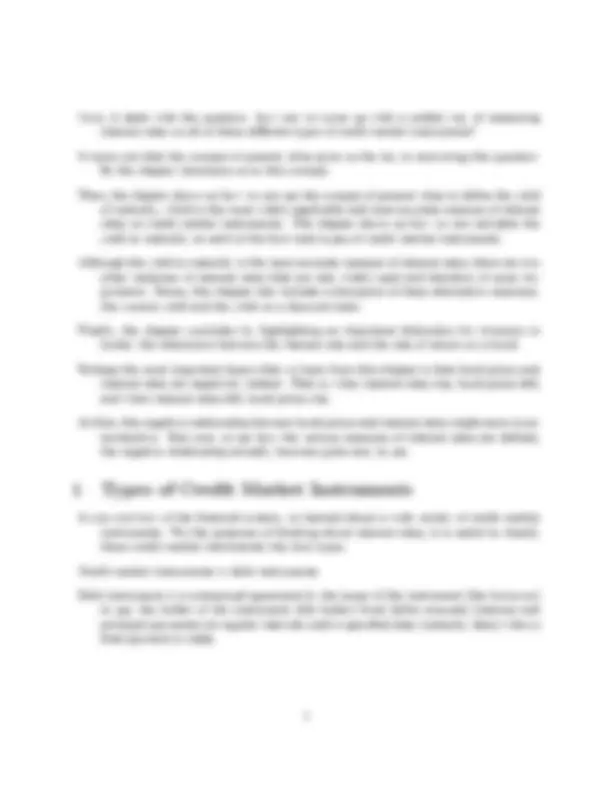
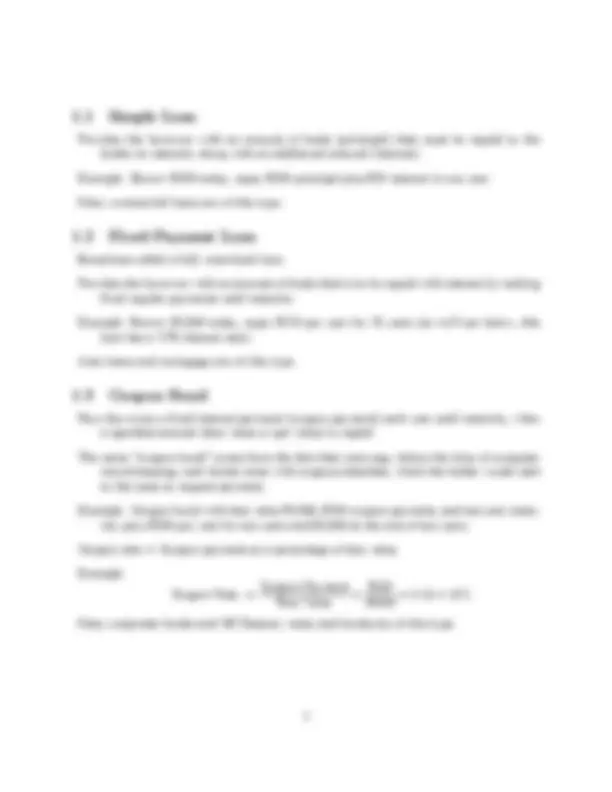
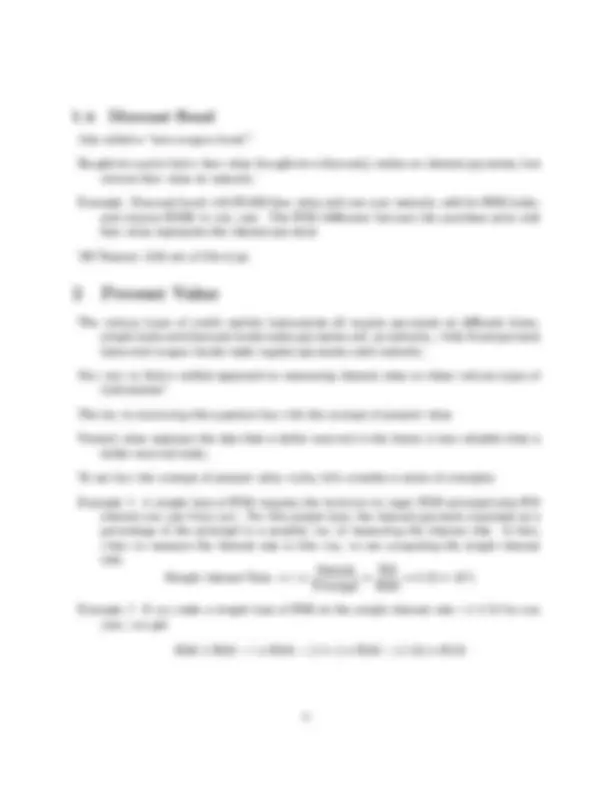

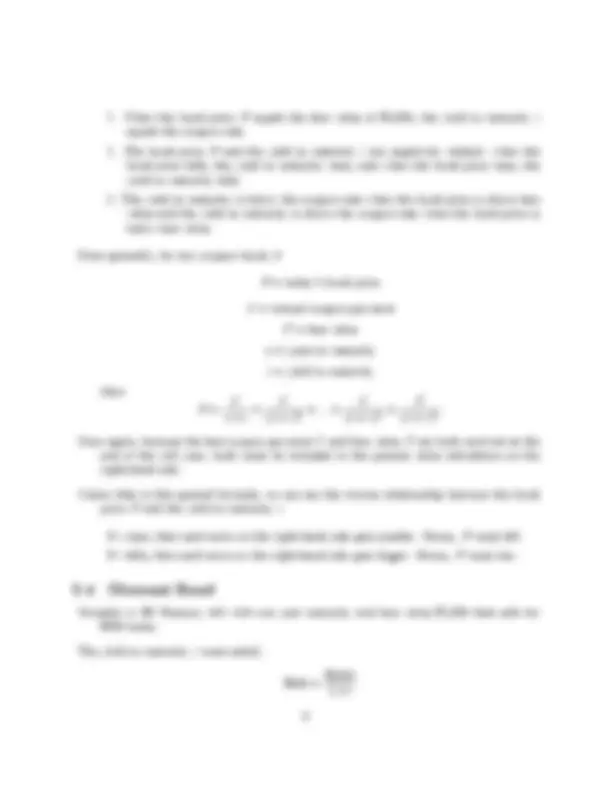
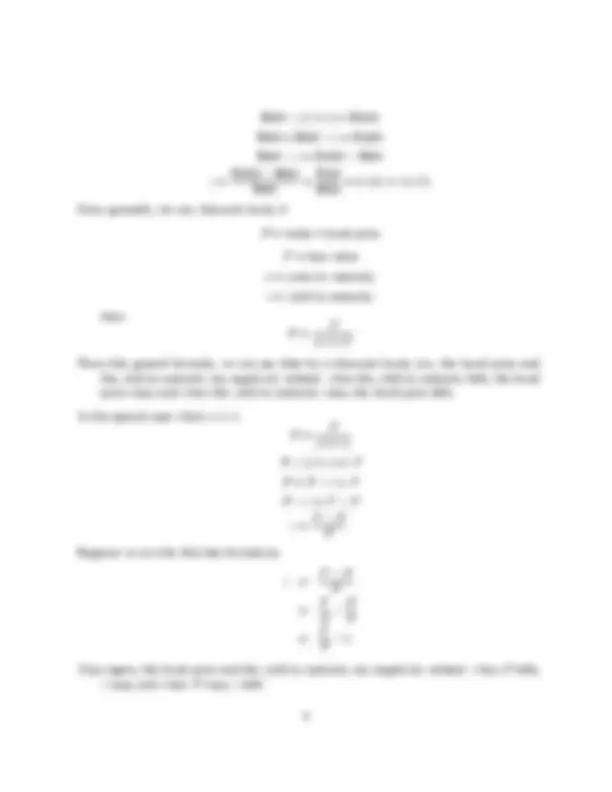
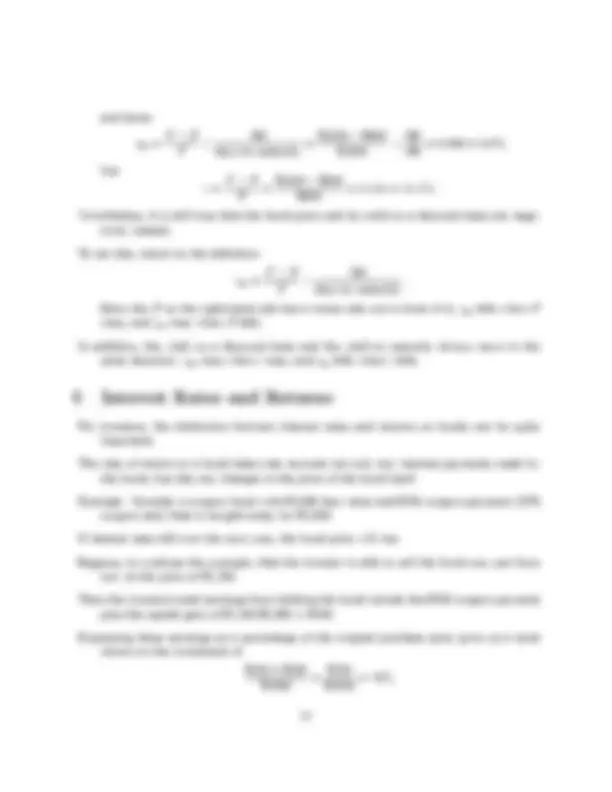
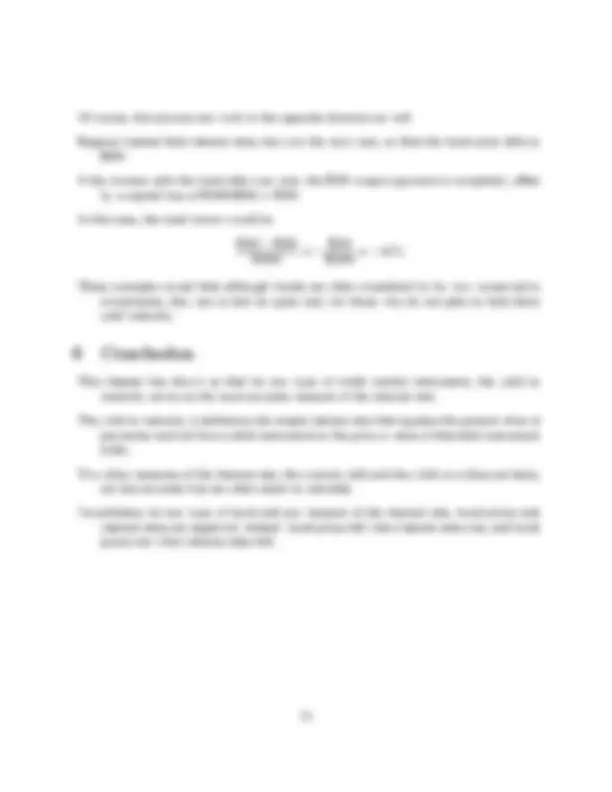


Study with the several resources on Docsity

Earn points by helping other students or get them with a premium plan


Prepare for your exams
Study with the several resources on Docsity

Earn points to download
Earn points by helping other students or get them with a premium plan
Community
Ask the community for help and clear up your study doubts
Discover the best universities in your country according to Docsity users
Free resources
Download our free guides on studying techniques, anxiety management strategies, and thesis advice from Docsity tutors
A lecture note on chapter 4 of 'money, banking, and financial markets' by peter n. Ireland, focusing on the concept of interest rates and how to measure them on various types of credit market instruments, including simple loans, fixed-payment loans, coupon bonds, and discount bonds. The document also discusses the yield to maturity and its relationship with bond prices.
Typology: Study notes
1 / 14

This page cannot be seen from the preview
Don't miss anything!









Simple Loan Fixed-Payment Loan Coupon Bond Discount Bond
Simple Loan Fixed-Payment Loan Coupon Bond Discount Bond
Current Yield Yield on a Discount Basis
This chapter begins the second part of the course, which focuses on the behavior of interest rates.
The analysis starts on familiar ground, by reviewing some of the types of credit market instruments that we discussed earlier, in our overview of the financial system. In particular, it usefully classifies those credit market instruments into four types: simple loans, fixed-payment loans, coupon bonds, and discount bonds.
Provides the borrower with an amount of funds (principal) that must be repaid to the lender at maturity along with an additional amount (interest).
Example: Borrow $100 today; repay $100 principal plus $10 interest in one year.
Many commercial loans are of this type.
Sometimes called a fully amortized loan.
Provides the borrower with an amount of funds that is to be repaid with interest by making fixed regular payments until maturity.
Example: Borrow $1,000 today, repay $126 per year for 25 years (as we’ll see below, this loan has a 12% interest rate).
Auto loans and mortgages are of this type.
Pays the owner a fixed interest payment (coupon payment) each year until maturity, when a specified amount (face value or par value) is repaid.
The name “coupon bond” comes from the fact that years ago, before the time of computer record-keeping, such bonds came with coupons attached, which the holder would mail to the issue to request payment.
Example: Coupon bond with face value $1,000, $100 coupon payment, and ten-year matu- rity pays $100 per year for ten years and $1,000 at the end of ten years.
Coupon rate = Coupon payment as a percentage of face value.
Example: Coupon Rate =
Coupon Payment Face Value
Many corporate bonds and US Treasury notes and bonds are of this type.
Also called a “zero-coupon bond.”
Bought at a price below face value (bought at a discount); makes no interest payments, but returns face value at maturity.
Example: Discount bond with $1,000 face value and one-year maturity sells for $900 today and returns $1000 in one year. The $100 difference between the purchase price and face value represents the interest payment.
US Treasury bills are of this type.
The various types of credit market instruments all require payments at different times: simple loans and discount bonds make payments only at maturity, while fixed-payment loans and coupon bonds make regular payments until maturity.
How can we find a unified approach to measuring interest rates on these various types of instruments?
The key to answering this question lies with the concept of present value.
Present value captures the idea that a dollar received in the future is less valuable than a dollar received today.
To see how the concept of present value works, let’s consider a series of examples.
Example 1: A simple loan of $100 requires the borrower to repay $100 principal plus $ interest one year from now. For this simple loan, the interest payment expressed as a percentage of the principal is a sensible way of measuring the interest rate. In fact, when we measure the interest rate in this way, we are computing the simple interest rate: Simple Interest Rate = i =
Interest Principal
Example 2: If you make a simple loan of $100 at the simple interest rate i = 0. 10 for one year, you get
$100 + $100 × i = $100 × (1 + i) = $100 × (1.10) = $
Yield to Maturity = the simple interest rate that equates the present value of payments received from a debt instrument to the price or value of that debt instrument today.
Also sometimes called the “internal rate of return.”
This is the most accurate and widely-applicable measure of interest rates.
In fact, we can use this definition to compute the yield to maturity on each of our four types of credit market instruments.
Consider a simple loan of $100 that repays $100 principal plus $10 interest, for a total of $110, in one year.
The yield to maturity i must satisfy
Value today = $100 = Present value of future payments =
1 + i
Let’s solve for i: $100 =
1 + i $100 × (1 + i) = $ $100 + $100 × i = $ $100 × i = $110 − $
i =
Thus, for simple loans, the yield to maturity equals the simple interest rate.
Consider a fixed payment loan of $1,000 that requires payments of $126 per year for 25 years.
The yield to maturity i must satisfy Value today = $ = Present value of future payments
=
1 + i
(1 + i)^2
(1 + i)^3
(1 + i)^25
A financial calculator or a computer will generally be needed to solve for i. In this example, the yield to maturity turns out to be i = 0. 1183 , or approximately 12%.
More generally, for any fixed-payment loan, if
LV = loan value (amount) today
F P = fixed annual payment n = years to maturity i = yield to maturity then LV =
1 + i
(1 + i)^2
(1 + i)^3
(1 + i)n^
Consider a coupon bond with $1,000 face value, $100 coupon payment (10% coupon rate), and ten-year maturity that sells at price P today.
The yield to maturity i must satisfy
1 + i
(1 + i)^2
(1 + i)^10
(1 + i)^10
Note that since both the final $100 coupon payment and the $1,000 payment of face value are received at the end of the tenth year, both must be included in the present value calculation on the right-hand side.
Once again, a financial calculator or a computer is needed to solve for i. A range of results, depending on the purchase price P , are displayed in Mishkin’s Table 1 (p.66):
Price of Bond P Yield to Maturity i
$1,200 7.13% $1,110 8.48% $1,000 10.00% $900 11.75% $800 13.81%
From this table, we can ascertain three important facts about the yield to maturity on a coupon bond:
$900 × (1 + i) = $ $900 + $900 × i = $ $900 × i = $1000 − $
i =
More generally, for any discount bond, if
P = today’s bond price
F = face value n = years to maturity i = yield to maturity then P =
(1 + i)n
From this general formula, we can see that for a discount bond, too, the bond price and the yield to maturity are negatively related: when the yield to maturity falls, the bond price rises; and when the yield to maturity rises, the bond price falls.
In the special case where n = 1:
P =
(1 + i) P × (1 + i) = F P + P × i = F P × i = F − P
i =
Suppose we rewrite this last formula as
i =
Once again, the bond price and the yield to maturity are negatively related: when P falls, i rises; and when P rises, i falls.
Although the yield to maturity is the most accurate and widely-applicable measure of interest rates, it is often difficult to calculate.
For this reason, a couple of other measures of interest rates are frequently used: the current yield and the yield on a discount basis.
Applies only to coupon bonds.
Recall that the yield to maturity on a coupon bond usually cannot be found without the help of a computer.
As a result, the yield to maturity on a coupon bond is often approximated by the current yield.
To calculate the current yield, let
P = today’s bond price
C = annual coupon payment ic = current yield then the current yield ic is defined as
ic =
Four facts about the current yield:
and hence
idb =
days to maturity
but i =
Nevertheless, it is still true that the bond price and its yield on a discount basis are nega- tively related.
To see this, return to the definition
idb =
days to maturity
Since the P on the right-hand side has a minus side out in front of it, idb falls when P rises, and idb rises when P falls.
In addition, the yield on a discount basis and the yield to maturity always move in the same direction: idb rises when i rises, and idb falls when i falls.
For investors, the distinction between interest rates and returns on bonds can be quite important.
The rate of return on a bond takes into account not only any interest payments made by the bond, but also any changes in the price of the bond itself.
Example: Consider a coupon bond with $1,000 face value and $100 coupon payment (10% coupon rate) that is bought today for $1,000.
If interest rates fall over the next year, the bond price will rise.
Suppose, to continue the example, that the investor is able to sell the bond one year from now at the price of $1,200.
Then the investors total earnings from holding the bond include the $100 coupon payment plus the capital gain of $1,200-$1,000 = $200.
Expressing these earnings as a percentage of the original purchase price gives us a total return on the investment of $100 + $ $
Of course, this process can work in the opposite direction as well.
Suppose instead that interest rates rise over the next year, so that the bond price falls to $800.
If the investor sells the bond after one year, the $100 coupon payment is completely offset by a capital loss of $1000-$800 = $200.
In this case, the total return would be
$100 − $ $
These examples reveal that although bonds are often considered to be very conservative investments, they can in fact be quite risky for those who do not plan to hold them until maturity.
This chapter has shown us that for any type of credit market instrument, the yield to maturity serves as the most accurate measure of the interest rate.
The yield to maturity is defined as the simple interest rate that equates the present value of payments received from a debt instrument to the price or value of that debt instrument today.
Two other measures of the interest rate, the current yield and the yield on a discount basis, are less accurate but are often easier to calculate.
Nevertheless, for any type of bond and any measure of the interest rate, bond prices and interest rates are negatively related: bond prices fall when interest rates rise, and bond prices rise when interest rates fall.